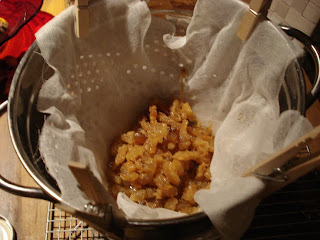
Yesterday my mother mentioned to me that Southern Living had updated their look and some of their content in response to feedback they'd gotten from busy readers who wanted to cultivate their 'own Southern style'. Being my compulsive self when it comes to these things, I decided I needed to go out and get the new, 'font-tastic' October issue. Like right now. Who knows what treasures awaited!
I wish.
This issue, redesigned with 'great care and respect for our heritage', missed an amazing opportunity. Lately, I've been consumed with reading books on the history of Southern cooking as well as numerous Southern cookbooks. I miss home and this is my way of trying to stay connected. So when I picked up this magazine I mistakenly thought I would get a modern hit of these old and new cookbooks and guidebooks. I was expecting some fresh grits made with real cheddar cheese and instead I got instant grits that had been sitting in a food warmer all day. I feel like this issue was a half-hearted attempt at giving the modern Southern cook something to really sink her teeth into. To me, the South has a unique perspective on history and this issue barely gave it a nod. It was a one-liner, a cop-out, a mere shadow of an amazing culinary tradition that seems to erode day by day by separating us more and more from our food.
What I did appreciate about this issue is that they kept the Southern Living House Plans segment (which I loved as a teenager), the beautiful travel photography, gardening tips and the piece on the baptism traditions in the Mississippi Delta. That was truly lovely.
On the other hand, not a single recipe piqued my interest. And I was particularly horrified by the "Mama's Way or Your Way?" segment they introduced. They compared an apple dumpling recipe made by a "Mama" named Peggy that took a total of 40 min to make and the daughter, Anne's, 'quick' recipe that took 20 min. The mother's recipe included making the dough yourself, cutting up the apples, and measuring out all the spices. In the daughter's recipe 3 out of 6 ingredients were pre-packaged and/or processed. Granted, I have definitely used frozen pie shells, and I completely understand why a busy woman would want to spare herself the time of making dough, but seriously pre-spiced and chopped frozen apples?
Is this really how a Southern magazine 'updates' itself? Is this staying true to our Southern heritage? Does 'update' mean using as many processed foods as we can find? Does adhering to Southern ways mean feeding our children trans-fats and food dyes, propylene glycol and corn syrup just so we can save 20 minutes? Being the food purist and the believer in Southern foodways that I am, I think the answer is no. I thought being Southern was taking your time, respecting culinary traditions, and enjoying every second of it.
If anything, this issue took a step backward and certainly didn't push us forward. Nothing can be compared to the food we cook ourselves. Everything changes when we prepare a recipe from start to finish, when we know exactly what each ingredient is and how to pronounce it. I heard once that simply by starting to cook again, we take something back. We take something back unto ourselves and we become healthier for it. I think cooking from scratch reminds us of what it actually means to be a Southerner, represents everything that being a Southerner is.
If I was the editor of Southern Living, here are some of the stories I'd feature, based on the book by John Egerton,
"Southern Food". What do you think?
1. Heirloom Recipes with a Modern Twist. Yes, you can really make that pie dough in no time at all. Here's how.
2. Charleston's Bessinger's Barbecue....reveals the decades old secret to its famous sauce!
3. Backyard Recipes: How to Grow, Harvest, and Cook Foods from your Fall Garden.
4. The History of Pork and Corn in the South.
4. The Top 25 'Down Home' Restaurants You Have to Try Before You Die.
5. The South's New Farmer's Market Scene.
6. The War Between the States: BBQ styles from Texas to North Carolina.
I am disappointed. There is nothing like a good magazine that takes you an entire Sunday afternoon to get through because it's packed full of interesting bits of information, nearly every page dog-eared because there's something you want to remember, learn about, cook, cut out and hang on your wall for inspiration, and most of all pass on.
This is just my opinion. If you happen to pick up this issue and have been a reader of Southern Living, I would love to hear your thoughts.
















